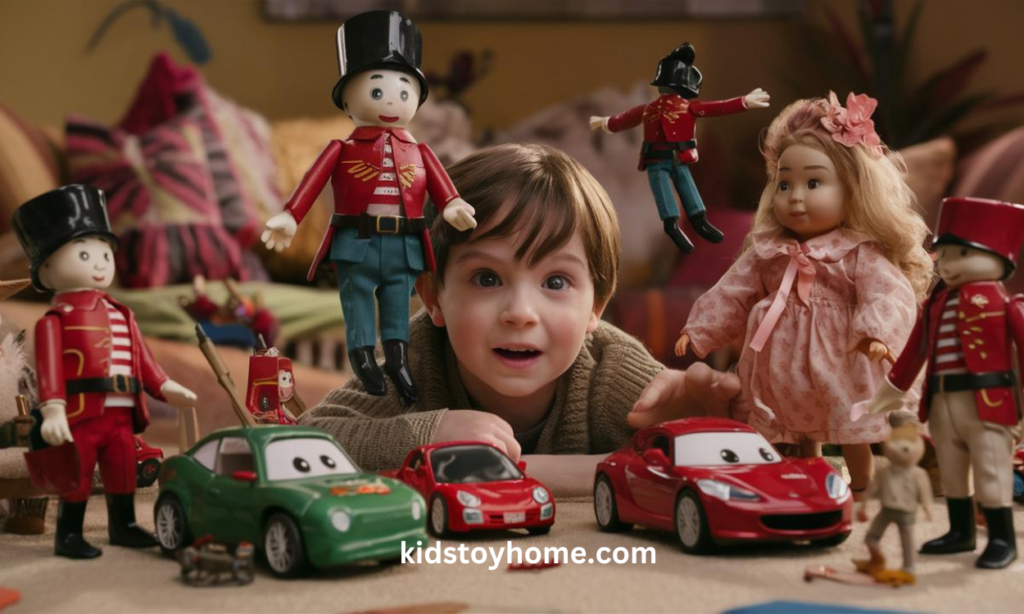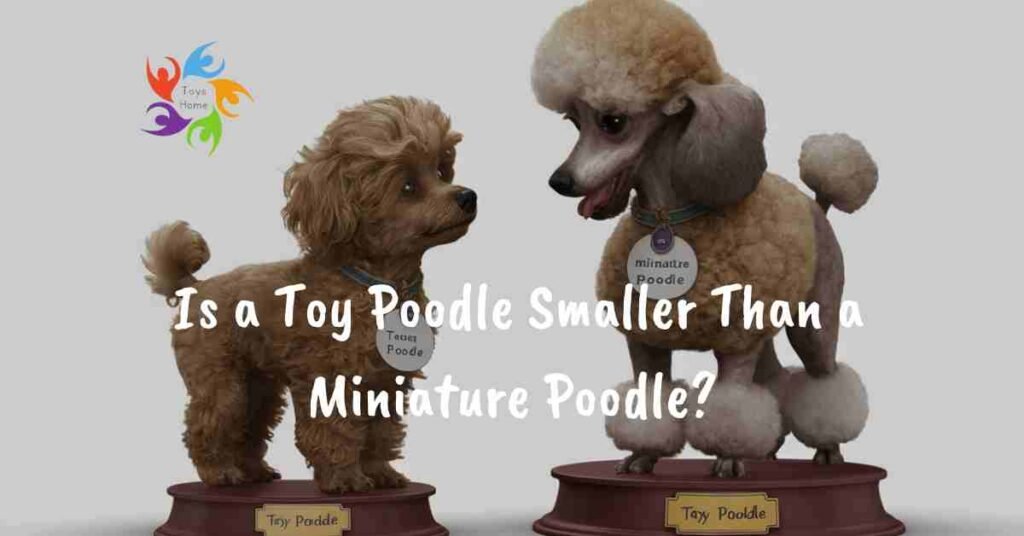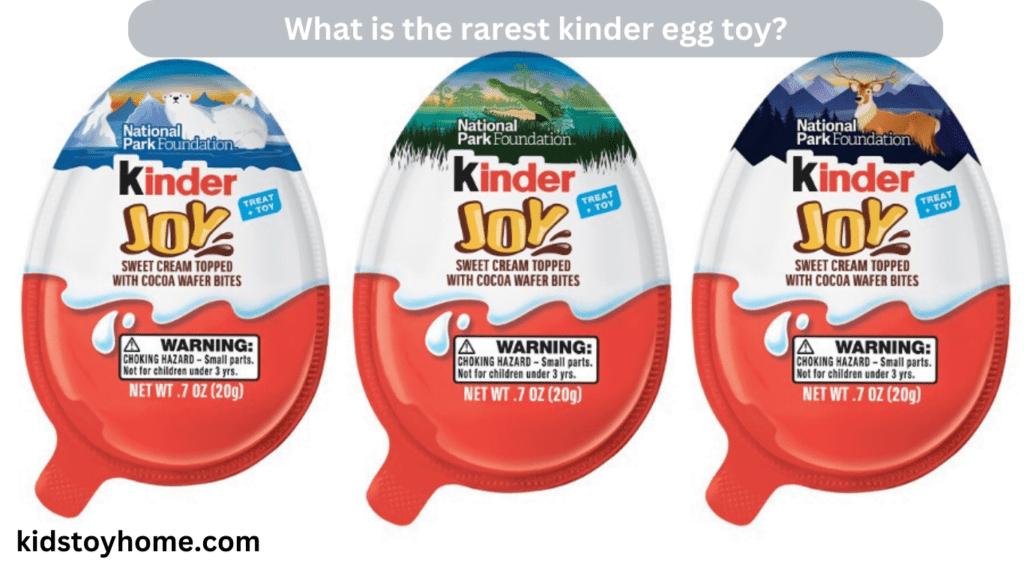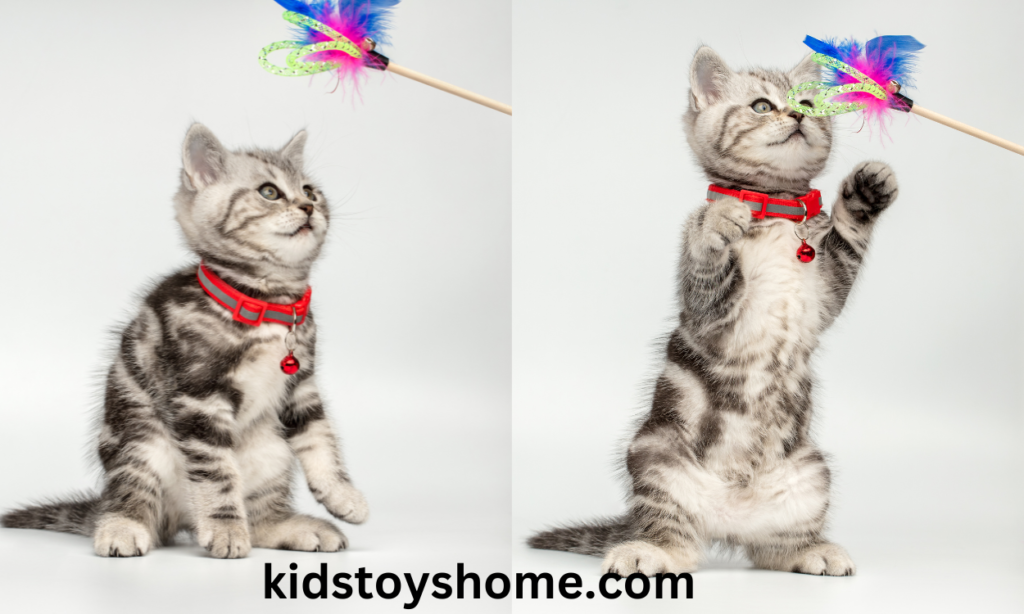
Kids often feel their toys are just objects, lacking real-life magic. They play with them but sometimes struggle to connect with the fantasy they imagine.
This disconnection can make playtime less engaging. If toys feel like mere objects, children miss out on the joy of making their fantasies come alive. It can dampen their enthusiasm and limit their creativity.
By using interactive and imaginative play, toys can become more real. Incorporating storytelling and active participation can transform them from static items into vibrant parts of a child’s world. Engaging with toys in creative ways helps bring their adventures to life.
The Science and Magic of How Toys Become Real
The fascination with toys coming to life has been a long-standing intrigue for both children and adults. From cherished childhood favorites like dolls and action figures to popular characters in movies and books, the concept of inanimate objects becoming animated characters captivates our imagination. However, the gap between this fantasy and reality is often vast, leaving many wondering how toys could truly come to life.
Advancements in technology have steadily started to bridge this gap. Through the combined efforts of microprocessors, sensors, and artificial intelligence, as well as innovations in material science, toys are becoming more interactive and lifelike than ever before.
The Role of Imagination
Imagination is a powerful tool that allows children to transform ordinary playthings into vibrant characters and fantastical scenarios. When children engage with their toys, they often attribute personalities, emotions, and stories to them, creating a rich tapestry of play that goes far beyond the physical toy itself. This process of imaginative play is not just a form of entertainment; it is a crucial aspect of cognitive and social development.
How Children Use Their Imagination to Bring Toys to Life

Children use their imagination to breathe life into their toys by embedding them into elaborate storylines and universes. A simple doll can become a princess in a faraway kingdom, and a set of building blocks can turn into a space station on a distant planet.
Through these narratives, children assign roles, voices, and emotions to their toys, making them integral parts of their social and emotional world. This kind of play helps children to explore relationships, solve problems, and navigate various social situations in a safe and controlled environment.
Examples of Imaginative Play
Examples of imaginative play are as varied as the children who partake in them. A group of toy soldiers might defend a castle made of cushions from an invasion of stuffed animals, or a teddy bear might host a tea party for other plush friends, complete with an intricate social hierarchy and backstories for each guest.
Action figures could embark on an epic quest across the living room, with each piece of furniture representing a different land or challenge to overcome.
These creative scenarios allow children to experiment with narratives and roles, often reflecting their own experiences and emotions.
Psychological Benefits of Imaginative Play
Imaginative play offers a multitude of psychological benefits for children. It enhances creativity and innovation, providing a foundation for problem-solving skills and original thinking. Through role-playing, children gain empathy by seeing things from different perspectives and understanding the emotions and motives of their characters.
Historical and Cultural Perspectives
Folklore and stories about toys coming to life
Throughout history, folklore and stories have enchanted audiences with tales of toys coming to life. One notable example is the story of “The Nutcracker,” where a wooden nutcracker transforms into a prince, leading a young girl on a magical adventure. The classic tale “Pinocchio” tells of a wooden puppet brought to life by a fairy, highlighting themes of honesty and the journey to becoming ‘real.’
These narratives often reflect deep-seated beliefs and desires, such as the longing for companionship or the magic of childhood wonder.
Cultural significance of animated toys in different societies
The cultural significance of animated toys varies across different societies, often reflecting the values and traditions of the time.
In Japan, the concept of tsukumogami—a belief that inanimate objects, including toys, acquire a spirit after reaching a certain age—speaks to a broader cultural respect for objects and their histories.
In Western cultures, animated toys frequently symbolize innocence and the power of belief, as seen in stories like “The Velveteen Rabbit” and “Toy Story.”
These tales not only entertain but also provide moral lessons and cultural insights, underscoring the universal appeal and significance of bringing toys to life through imagination and narrative.
The Science Behind Animated Toys
Introduction to Robotics and AI in Modern Toys
The advancement of robotics and artificial intelligence (AI) has significantly impacted the world of toys, transforming them from simple playthings to complex, interactive companions.
Modern toys equipped with AI can learn from children’s interactions, adapt their behavior, and even exhibit emotional responses. This innovation bridges the gap between traditional imaginative play and high-tech engagement, offering children a unique blend of both worlds.
Examples of Technologically Advanced Toys
Among the myriad of technologically advanced toys, interactive dolls and robotic pets stand out for their lifelike interactions and learning capabilities. For instance, interactive dolls like Luvabella respond to touch and voice with realistic facial expressions and movements, creating an engaging experience for children.
Robotic pets such as Aibo, the robotic dog from Sony, can recognize faces, respond to commands, and even exhibit playful behaviors that closely mimic a real pet.
The Future of Smart and Interactive Toys
The future of smart and interactive toys looks incredibly promising, with ongoing advancements in AI and robotics poised to introduce even more sophisticated features. Upcoming innovations may include toys with enhanced emotional intelligence capable of forming deeper bonds with children through personalized interactions.
We may see increased integration of augmented reality (AR) and virtual reality (VR) technologies, providing immersive play experiences that blend the physical and digital worlds seamlessly. As these technologies evolve, the line between science fiction and reality will continue to blur, making the magic of animated toys more accessible than ever before.
The Magic in Literature and Media
Analysis of Popular Books and Films that Depict Toys Becoming Real
In literature and media, the theme of toys coming to life has been explored through several beloved narratives. One of the most notable examples is “The Velveteen Rabbit” by Margery Williams.
This heartwarming story follows a toy rabbit who desires to become real through the love of his owner. The tale emphasizes themes of love, acceptance, and the transformative power of belief.
Disney’s “Toy Story” series portrays a world where toys secretly come to life when humans are not around. These films delve into the dynamics of friendship, loyalty, and identity among the toy characters, showing them navigating feelings of abandonment, jealousy, and camaraderie.
Themes and Morals Presented in These Stories
The recurring themes in these stories often revolve around love, friendship, and self-worth. “The Velveteen Rabbit” teaches that true beauty and realness come from love and personal connection, suggesting that emotional bonds can transcend the physical state.
On the other hand, “Toy Story” communicates the importance of friendship and being there for one another through various trials. It also touches on the fear of obsolescence and the pursuit of purpose, mirroring real-life existential questions. Through these narratives, audiences—both young and old—are prompted to reflect on the deeper meanings of connection, belonging, and the essence of being “real.”
Parental and Educational Influence
How Parents and Educators Can Encourage Imaginative Play
- Supportive Environment: Create a safe and supportive environment where children are free to explore and express their imaginations without judgment.
- Role Modeling: Engage in imaginative play with children, showing them how to create scenarios and stories.
- Provision of Resources: Provide a variety of toys, books, and materials that stimulate creativity and imagination.
- Encouragement: Praise and encourage children’s imaginative efforts to reinforce the value of creative thinking.
Tools and Techniques to Foster Creativity in Children
- Open-Ended Toys: Offer toys that can be used in multiple ways, such as building blocks, art supplies, and dolls.
- Storytelling and Reading: Read stories regularly and encourage children to create their own stories or expand on existing ones.
- Creative Art Projects: Involve children in art and craft projects where they can freely express their ideas and creativity.
- Questioning and Problem Solving: Ask open-ended questions to stimulate thinking and encourage children to come up with creative solutions to problems.
Introduction to the Velveteen Rabbit

The Velveteen Rabbit is a beloved children’s book by Margery Williams. It tells the story of a stuffed rabbit who dreams of becoming real. The rabbit lives in a nursery among other toys and longs to be loved by a child. Through this love, the rabbit hopes to become a real bunny.
The story explores the magic of how toys can become real through genuine affection. It shows that love and care are powerful forces that can transform ordinary objects into something special. The Velveteen Rabbit’s journey is a heartwarming tale about the importance of love and being cherished.
The Velveteen Rabbit’s Beginning
The Velveteen Rabbit starts in a nursery where toys are waiting to be loved. The rabbit, made of velveteen, is excited to be chosen by a child. Unlike the other toys, which are more glamorous, the rabbit feels plain and ordinary. It dreams of becoming a real rabbit one day.
At first, the Velveteen Rabbit is unsure about its place among the fancier toys. It envies their beauty and attention. The rabbit begins to understand that being real comes from being loved deeply, not from looks. This realization starts its journey towards becoming truly special.
The Magic of Becoming Real

The magic of becoming real happens when toys are loved deeply by children. The Velveteen Rabbit learns that realness comes from the heart, not just appearances. As the rabbit is loved and hugged, it begins to change and become more special. This transformation is not about changing physically but becoming significant through love.
The more the Velveteen Rabbit is cherished, the more real it feels. It starts to experience true emotions and connections with the child. This magic shows that love can turn something ordinary into something extraordinary. The rabbit’s journey teaches that being real is about genuine affection and understanding.
Challenges and Experiences in the Nursery

In the nursery, the Velveteen Rabbit faces many challenges. He is just one of many toys and often feels overlooked or forgotten. The other toys are more glamorous, and the rabbit has to prove his worth through patience and love.
Despite these challenges, the rabbit has memorable experiences. He forms strong bonds with the boy and learns about friendship and loyalty. The nursery becomes a place of growth, where the rabbit’s perseverance and love help him navigate through his difficulties and come to understand his value.
The Velveteen Rabbit’s Journey to Realness

The Velveteen Rabbit’s journey to becoming real begins with his deep bond with the boy. The rabbit is loved and played with every day, which makes him feel special. He learns that being loved is the key to becoming real.
As time passes, the rabbit’s fur becomes worn and his seams loosen, showing signs of his love and use. Through these changes, the rabbit transforms from a mere toy into a real and cherished companion. His journey highlights how love and care can turn something ordinary into something truly real.
The Moment of True Realness
The moment of true realness for the Velveteen Rabbit comes when he is no longer just a toy but a real, living being. This happens after he is loved deeply by the boy and then transformed by the magic of the nursery. The rabbit feels a deep sense of joy and fulfillment as he finally becomes real in the eyes of those who love him.
This transformation is marked by a special moment when the rabbit is seen by other real rabbits in the garden. They recognize him as one of their own, and he feels a profound sense of belonging and happiness. This experience shows that true realness comes from being loved and accepted for who you are.
The Impact of the Velveteen Rabbit’s Transformation
The Velveteen Rabbit’s transformation has a profound impact on his understanding of himself and his place in the world. Once just a toy, he becomes a real rabbit, full of life and joy. This change makes him realize that love has the power to bring out the best in anyone or anything. His new form allows him to experience the world in a way he never could before.
His transformation also shows the boy the value of true love and authenticity. The boy’s love for the rabbit makes the transformation possible, and seeing the rabbit become real teaches him about the power of genuine feelings. This deepens the boy’s appreciation for love and its ability to create meaningful change in life.
The Velveteen Rabbit’s Legacy and Message
The Velveteen Rabbit teaches us about the power of love and transformation. It shows that true realness comes from being loved deeply, even if it’s not always visible. This message encourages us to value emotional connections over superficial appearances.
The story also highlights the beauty of growing through experiences. The Velveteen Rabbit’s journey reminds us that becoming “real” means embracing our feelings and relationships. Its legacy continues to inspire people to cherish love and authenticity in their lives.
Conclusion:
True realness is about more than just appearances; it’s about the depth of love and connection. The Velveteen Rabbit’s story illustrates that being truly real means being loved deeply and genuinely. It’s through this love that we transform and become our most authentic selves.
The essence of realness lies in embracing our experiences and relationships. Just like the Velveteen Rabbit, we find true meaning and value in our lives through the love we give and receive. This message encourages us to seek out and cherish the deep connections that make us truly real.
FAQs
What is the main message of “The Velveteen Rabbit”?
The story teaches that true realness comes from being deeply loved. It’s about transforming through genuine connections.
How does the Velveteen Rabbit become real?
The rabbit becomes real through the love and affection of the child. This love transforms it from a toy into a real being.
What role does love play in the Velveteen Rabbit’s transformation?
Love is essential for the transformation. It’s the deep, genuine affection from the child that makes the rabbit truly real.
What challenges does the Velveteen Rabbit face?
The rabbit faces challenges of wear and tear as it becomes more loved. It must endure these trials to achieve realness.
What is the legacy of “The Velveteen Rabbit”?
The story’s legacy is its message about the power of love. It teaches us that love makes things and people truly real.





